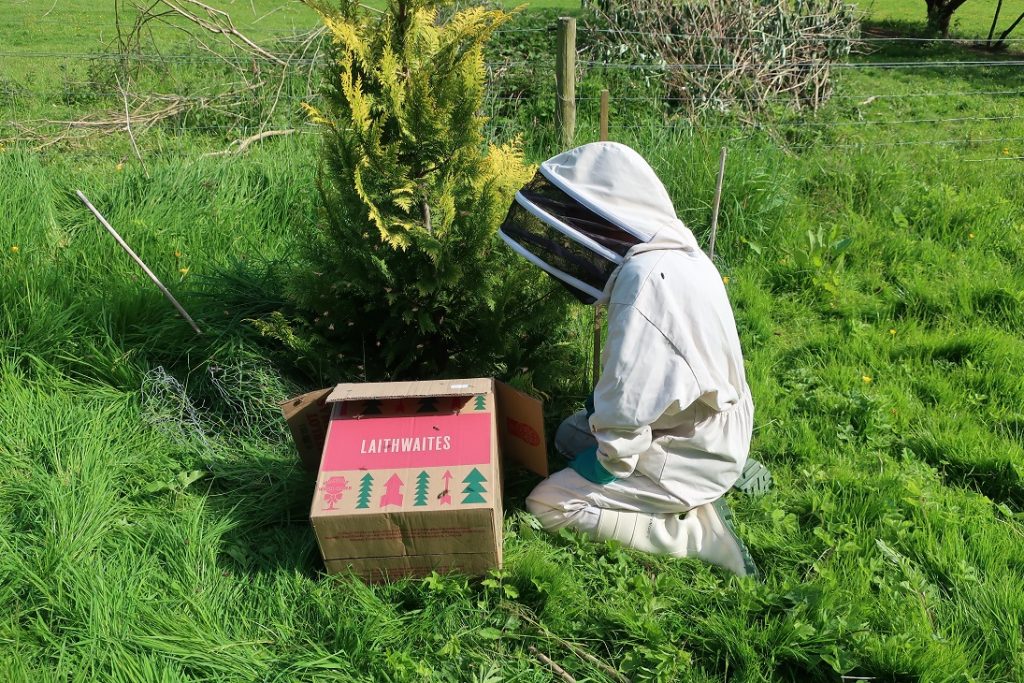
After miserably cold May weather, June has been more promising with temperatures as high as 23 degrees Celsius. Between 16- 20 degrees C is “hot” for us here in this part of Scotland. The bees respond accordingly and the county has been resounding with the sound of swarming bees and phones ringing to alert swarm collectors.
Exchanging Knowledge & Skills.
As part of a planned day of knowledge and skills exchange, Yvonne Davidson came over the hills from her Aberdeenshire home in Tarland to spend the day with me beekeeping. Yvonne began beekeeping with her father when she was 4 and is a natural. Spending time with an experienced beekeeper is a great way to learn new things and it is a win win situation for both parties. Yvonne was keen to learn some handling techniques from me so we worked in my home apiary marking queens and doing dedicated brood diseases inspections before heading to the out-apiary in the afternoon.
Cardboard Box.
The loud noise of a leaving swarm soon settles, and you have to be observant to find some quiet hidden swarms bivouacking out till the’ve agreed on the new home and departed to it. This swarm was found by chance on the way to look at wild bees living in a wall where gardeners once lit fires to warm the fruit trees espaliered to the wall. We wondered why a few bees were milling round this shrub in the late afternoon.Further investigation revealed all.
A skep was not the right tool for this swarm so Sally, the property owner, collected up everything we needed for the job. The cardboard box worked a treat for bees at ground level to walk into with a little smoke behind as encouragement to move forwards. We thought that the queen must be in the box because of all the fanning at the sides but later we found a large clump of bees at the back of the shrub. They marched forwards under heavy smoking from behind, and soon an amazingly large and fertile looking dark queen appeared. I immediately picked her up and marked her and carried her over to a hive that appeared to have had no queen laying for some time. Yvonne suggested that the swarm would give them a boost and Sally was willing to try though it was not something that I would have thought of doing. We agreed it was risky since we were not sure of the health of the swarm but we took a chance.

It was getting late in the day and we were all “swarmed out” and our apiaries were already bulging with nuclei from swarm control so this seemed like a good idea. It was certainly fun to watch. We lightly smoked the queen and I released her just in front of the swarm that Yvonne dropped out of the box onto the sheet. She marched into the hive and the others followed.

Setting Up My Observation Hive.
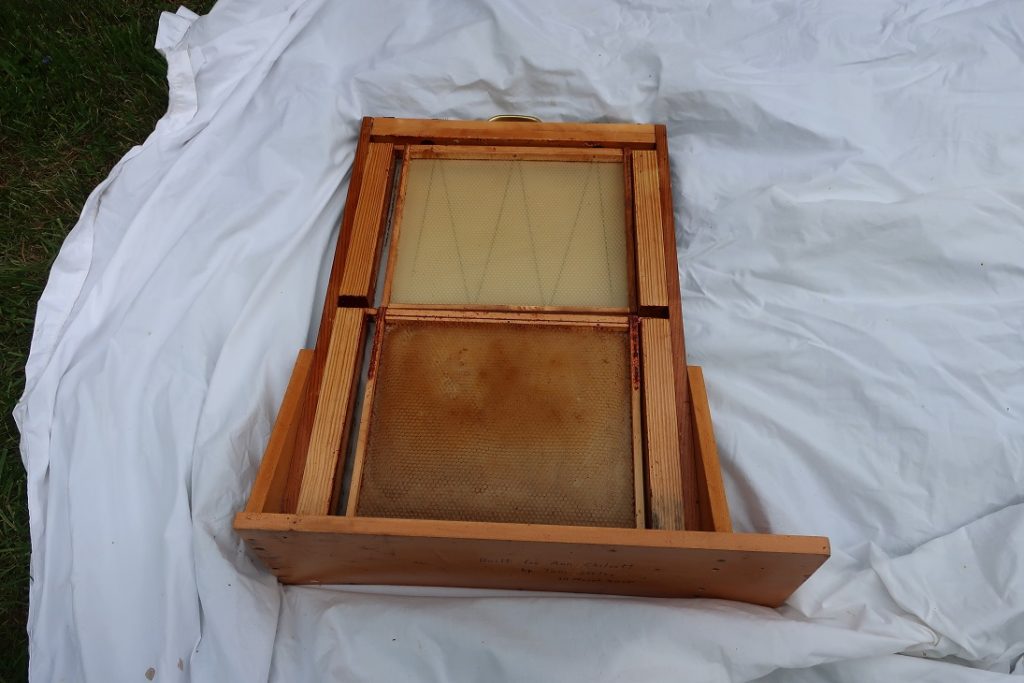

I wanted to fill this wonderful hive made for me by Tom Seeley and set up by himself and Linton Chilcott in 2015. I was planning on transferring bees from a nuc but the perfect swarm came along a couple of hours after I’d prepared the hive. The bee shed used to be much larger than it is now, so it is a bit tight for more than one person to view at a time. However, it makes a great place for people to watch honey bees at work closely and safely.
I collected the prime swarm with a virgin queen from a nearby hawthorn hedge in a nuc and shook the bees onto the frames in the hive (I couldn’t decide which cell to leave so left 2 in the parent colony as an experiment a week ago!). The bees were already in the box when Stephen McCarthy came up the road for afternoon tea and to share some avocado honey from abroad. He jumped into his bee suit and helped me with the rest of the job.Phew! thank you Stepen for I would never have managed it alone.
We assembled the hive and talked through our plan before emptying the bees into it. Stephen shook the swarm into the frames on the ground and I smoked the sides and shut them in as quickly as possible. Stephen securely taped the sides and carried the hive into the shed and bolted it firmly to the bench.
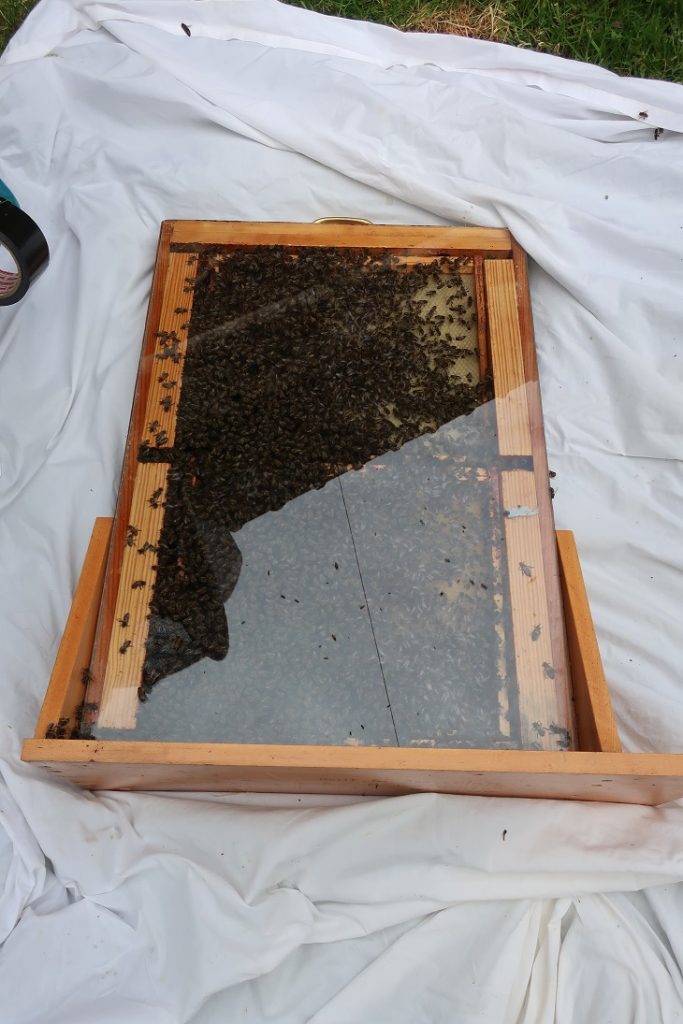

The Queen.
We noticed a ball of bees collecting at the swarm site so we picked them up in the nuc and dropped them onto a white sheet in front of the parent colony so I could look for the queen before she ran up the ramp I’d made. I found her and picked her up by the wings and popped her in the feed hole at the top of the observation hive. This morning they are festooning and drawing wax but I shall feed them later in the day.
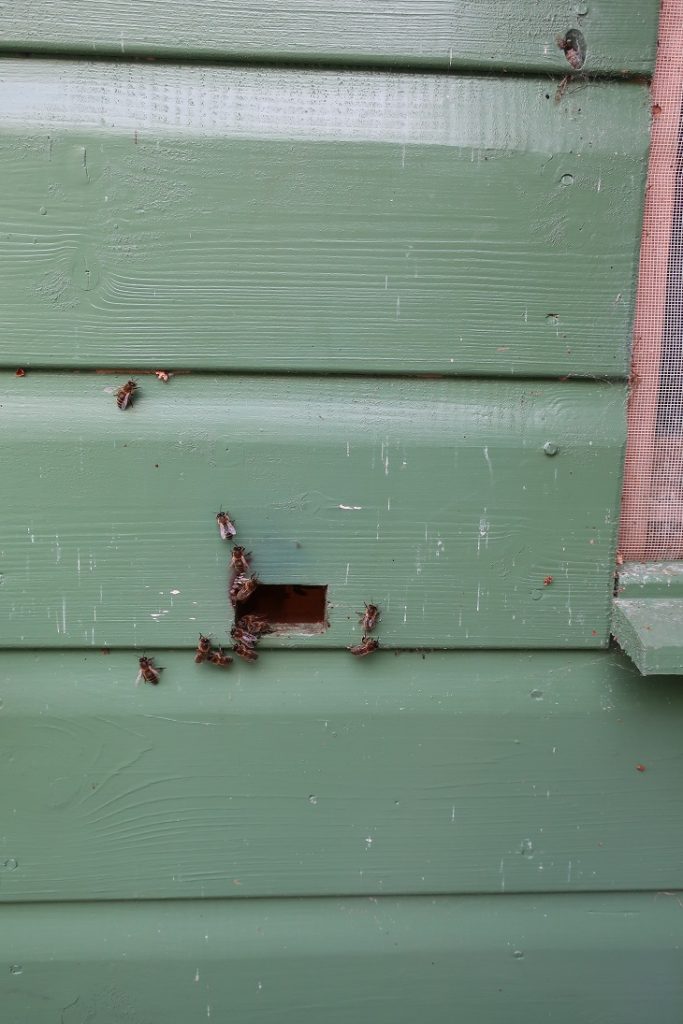
More adventures next week!

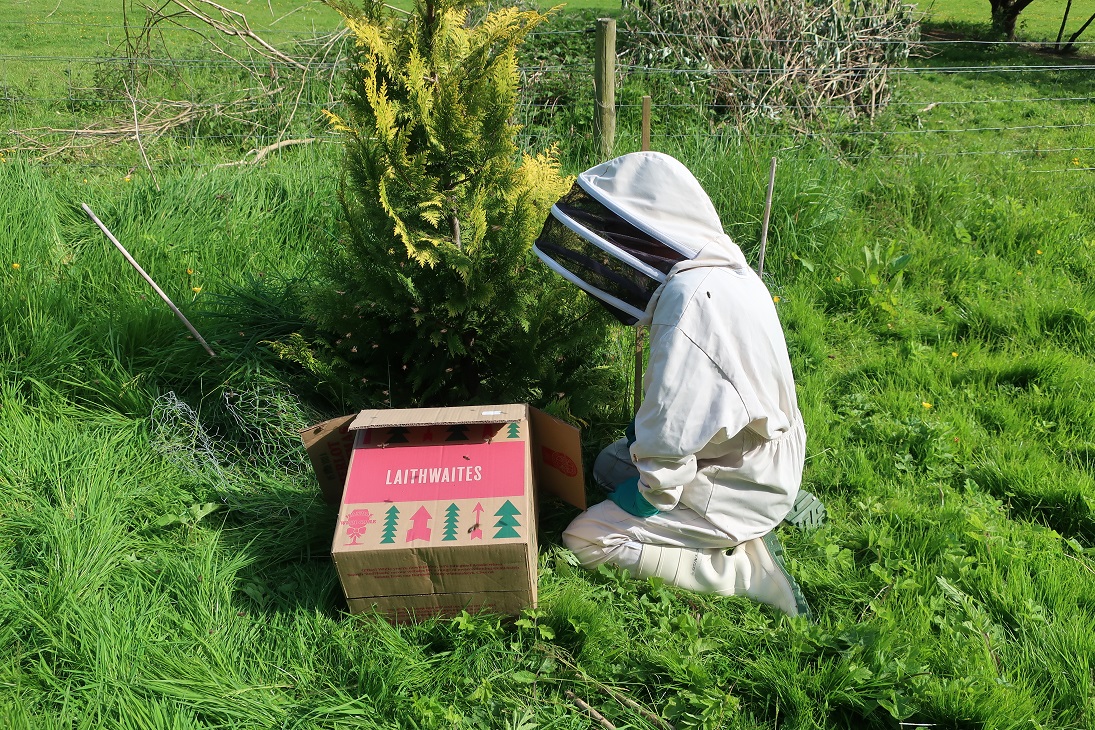
Very interesting, thank you.